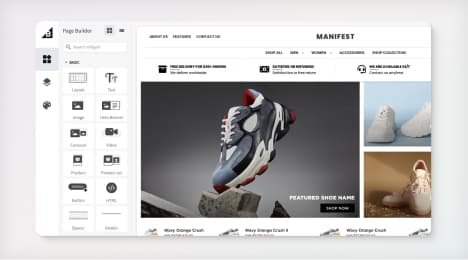
Watch Our Product Tour
See how BigCommerce helps you build and manage your online store with ease.
- Ecommerce Insights

6 Key Steps to Launch Your Online Store
Explore our Launch Foundations series to get your BigCommerce store up and running quickly.
BigCommerce helps growing businesses, enterprise brands, and everything in-between sell more online.
How to properly label vintage items
Selling items from the past online requires ecommerce merchants to do their research and label pieces appropriately. There are many different interpretations of terminology used to describe products that were crafted in another era. Labeling items correctly is essential to successful business practices, profitability and a strong online reputation.
Antique
The term antique is widely accepted as the label applied to items that are over 100 years old. In the antique trade, industry experts state that these century-old relics have aesthetic and historical significance. Antique HQ reports that some dealers in recent years have tried lowering the age bracket to 50 years, which would make anything created before 1965 an antique (1). Most industry professionals disagree with this and believe it to be detrimental to the trade, as it would dramatically lower the standards of the antique collector's world.
Antiques will stand the test of time when it comes to value. Regardless of present trends or market demands, an antique retains its worth over time. In fact, it may even increase as the years pass by.
Vintage
The term vintage is applied to items that are at least 20 to 25 years old. It is said that it takes roughly two decades for society to agree upon and deduce exactly what style truly defines a particular era. The word vintage refers to the time frame in which the item was manufactured. Therefore, many merchants attribute specific decades to vintage pieces. For instance, a chair may be labeled "Vintage 1970s."
A vintage item should prominently display the most remarkable qualities of its time period. It should really speak to that time in history. Sometimes, vendors attribute the word vintage to items that have simply come back into style after a period of 20 years or so. As long as the product was actually manufactured several decades in the past, and it does not simply represent a previous style or trend, it can be labeled vintage.
Retro
This label tends to give sellers the most trouble, as it is widely used as a descriptor for items manufactured in the 1950s. This is a bit misleading, as those items can also be qualified as vintage. To be safe, ecommerce merchants should only apply the word retro to items that are merely inspired by past designs. If a chair was built in 2015, but has the look of and was modeled after popular chairs of the 1950s, it can be labeled retro. In addition, retro can be used to describe pieces that are in fact aged, but not old enough to fall into the vintage or antique categories. For instance, a chair from the 1990s with design elements distinctive of that era could be called retro. It's a little bit old, a little bit new, but not from last season's collections.
Collectible
The collectible is an item worth more because of its rarity or demand. It is a valuable object that could fall into any one of the three categories listed above. Collectibles are not items that were mass-produced, as many people may think. Just because a group or individual collects a type of product does not make it a collectible, by definition. For example, collecting baseball cards is a common pastime. Baseball cards themselves are not collectibles. The T206 Honus Wagner baseball card, however, is a collectible (2). This is because the American Tobacco Company produced only a few copies in 1909 and it's very hard to track them down today. Age and rarity make that card a collectible.
What does this mean for ecommerce owners?
The price of collectibles, vintage pieces and retro items can shift easily. Even antiques, with fairly stagnant pricing over time, might become more or less valuable throughout the years. Value fluctuates with demand, especially in the clothing and furniture markets. Ecommerce merchants can monitor current economic trends in order to better predict which type of item - or which era - is currently most popular among buyers. When the economy worsens, consumers tend to grow more nostalgic. Antique and vintage items often will sell better during rough economic patches.
It's imperative ecommerce store owners understand that simply applying a label to an item for sale online is no guarantee. It's irresponsible and unprofessional to haphazardly label an item that exudes antiquity as an antique. Store owners must check manufacture dates and the provenance of items whenever that information is available. This will prevent buyers from claiming items are falsely advertised or incorrectly marketed. If it is difficult to verify exactly when an item was fabricated, provide a warning or disclaimer to buyers before checkout. Again, this prevents any trouble down the road. Collectors of older furniture, clothing, handbags, art and more will likely do their research and can spot replications or fakes as soon as they arrive on their doorsteps.
1. The difference between antique, vintage and collectible items
2. Collectible
BigCommerce helps growing businesses, enterprise brands, and everything in-between sell more online.
Start growing your ecommerce business even faster.
High-volume or established business? Request a demo